Last updated: July 17, 2018
Article
Effects of Balsam Woolly Adelgid on True Firs in a Changing Climate
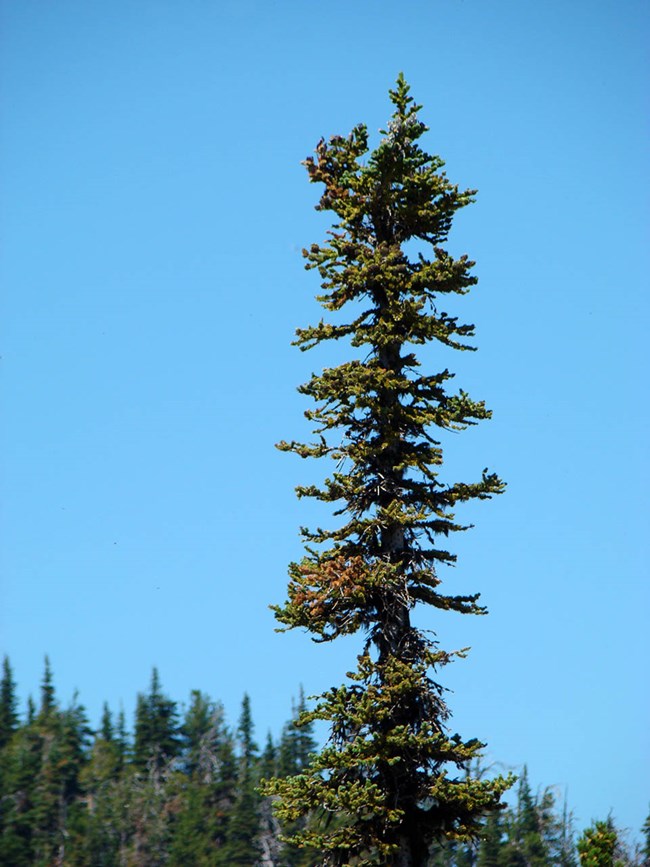
US Forest Service
In about 1900, a tiny insect called balsam woolly adelgid (Adelges piceae), a European native, appeared in North America on balsam firs (Abies balsamea) in New England and Canada. In 1928 it was found for the first time in a western state, on ornamental firs near San Francisco. It can now be found in in eastern North America from Newfoundland to North Carolina. In the West it is found in British Columbia, Washington, Oregon, Idaho and California.
Any true fir can be host for balsam woolly adelgid, though some are more susceptible than others. In Mt. Rainier and North Cascades National Parks, infestations have been found on subalpine fir (Abies lasiocarpa) and Pacific silver fir (Abies amabilis), but subalpine fir is more heavily damaged.
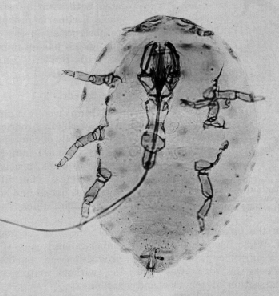
Adult balsam woolly adelgids are about 1 mm in length, roughly spherical, black, and generally covered with a white woolly secretion that protects them from predators and weather. They have long, piercing mouthparts that they insert into the host tree. They pump a salivary substance through their mouthparts, which breaks down host tissues so they may be sucked up and digested.
One prominent symptom of balsam woolly adelgid infestation is branch gouting: distinct swellings that occur at branch nodes where insects have been feeding. Salivary toxins injected by the insect, produces abnormal cell reactions that usually halt new shoot growth and cause the crown to become thin and inefficient at photosynthesis. Persistent infestations can cause slow decline and death of the tree.
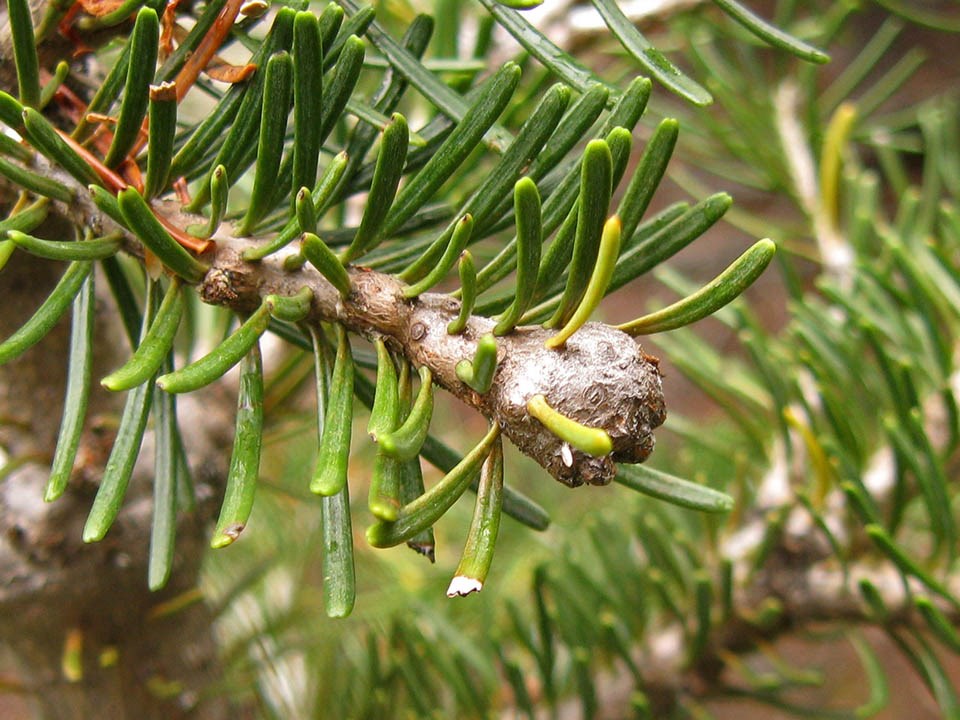
US Forest Service
Infestations on the main stem of the tree can cause irregular growth rings similar to compression wood. This abnormal growth disrupts water conduction, and may kill the tree within a few years. Stem infestations may be quite visible, with insects appearing as a tiny, white, cotton balls all over the bark.
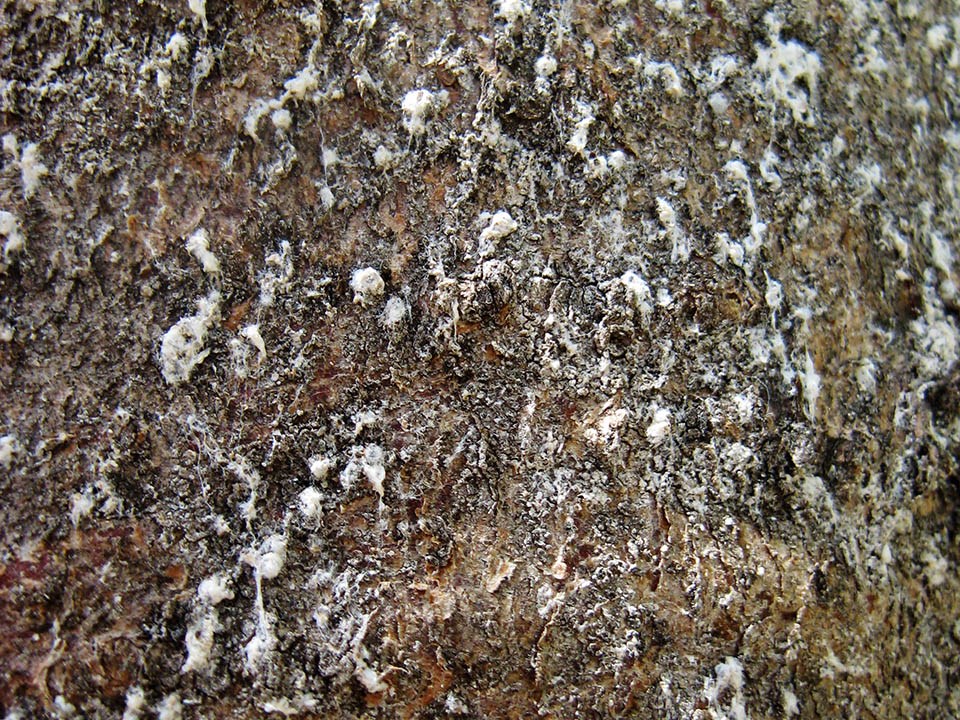
US Forest Service
Balsam woolly adelgids have two to three generations per year. In Europe the insect has a sexual and an asexual stage, but in North America all of the adults are females. Each female can lay 30 to 100 eggs, which hatch in 9 to 12 days. The newly-hatched first-instar nymphs, referred to as “crawlers”, are the only mobile stage. They are long-legged, and move about looking for a feeding site. This stage may also be moved around by the wind. This is the insect’s only opportunity for active dispersal. Once they have selected a suitable location, they insert their mouthparts into living bark and begin feeding. Once their mouthparts are inserted, the insect undergoes a physiological change, and becomes a sedentary nymph and finally a reproductive adult.
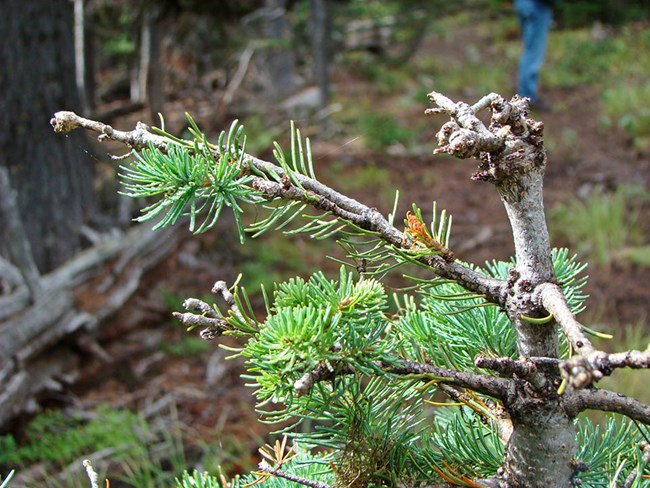
US Forest Service
The range of balsam woolly adelgid may be constrained by low temperatures. Most infestations in Washington State occur at elevations between 800-6,000 ft., but few heavy infestations have been observed above 6,000 feet. However, long term monitoring surveys since 2006 have documented trends of increasing infestation in tree crowns.
Climate models predict warmer winters in much of the interior West, which may enable balsam woolly adelgid to survive and reproduce in these historically cooler forests. With a warming climate, the future of high elevation subalpine firs is a concern to park managers. Long term monitoring is currently underway in Mt. Rainier National Park to better understand the effects and environmental consequences of balsam woolly adelgid.
